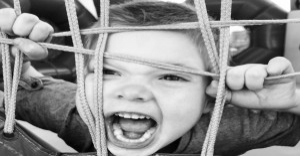In the rhythm of early childhood, emotional storms are natural. Toddlers and preschoolers are still learning to navigate big feelings, and their expressions, whether tears, tantrums, or withdrawal, are often calls for connection, not correction. As educators, our role is to be the calm in their chaos, offering warmth, understanding, and safe spaces to feel. The following article explores emotionally intelligent strategies that educators can implement to support children during moments of overwhelm, with examples.
Why Connection Matters
Children calm down when they feel safe—not when they feel judged. Neuroscience and trauma-informed practice both affirm that:
- Co-regulation precedes self-regulation
- Empathy builds trust and resilience
- Gentle responses reduce cortisol and support brain development
Strategies & Examples
1. The “Feelings Tent” or Cozy Corner
- Create a small, enclosed space with soft cushions, sensory toys, and calming visuals.
Example: A toddler having a meltdown can be gently invited to the tent with a soft voice: “Let’s take a break together.”
Symbolism: Include emotion cards or visual prompts like clouds, suns, or waves to help children name their feelings.
2. Gentle Touch & Proximity
- Sometimes, a hug or sitting nearby is all a child needs to feel safe.
Example: A preschooler who’s frustrated during group time may respond to a hand on their back and a whispered “I’m here with you.”
Tip: Always ask for consent with phrases like “Would you like a hug or to sit close?”
3. Voice Bubble Cards for Emotional Expression
- Use laminated cards with simple phrases like “I feel sad,” “I need space,” or “I want a cuddle.”
Example: A child can point to a bubble instead of verbalizing, which is especially helpful for toddlers or neurodivergent children.
Creative twist: Let children decorate their own bubbles with stickers or drawings.
4. Breathing Buddies or Calm Toys
- Introduce soft toys that “breathe” with the child—inhale and exhale slowly together.
Example: “Let’s help Teddy breathe. In through the nose… out through the mouth.”
Bonus: Use natural materials like lavender sachets or smooth stones for grounding.
5. Emotionally Intelligent Storytime
- Read books that model emotional regulation and empathy.
Example: After a tough morning, gather the group for a story like The Color Monster or When Sophie Gets Angry.
Extension: Pair with gentle music or movement to help reset the nervous system.
6. Symbolic Rituals for Reconnection
- Use small rituals to restore connection after a rupture.
Example: A child who pushed another might offer a “peace pebble” or draw a “sorry sun” to give.
Language: “We all make mistakes. What matters is how we make it right.”
7. Visual Emotion Planners
- Create daily emotion check-ins using colour-coded charts or symbolic icons.
Example: Children place their name/photo under “sunny,” “cloudy,” or “stormy” to reflect their mood.
Reflection: Use this as a springboard for conversations. “What made your day cloudy?”
Supporting toddlers and preschoolers through emotional overwhelm isn’t about fixing—it’s about feeling with. When educators offer connection, children learn that their emotions are safe, their voices matter, and their relationships are secure.
These strategies aren’t just tools, they’re invitations to co-create emotionally intelligent environments where every child feels held, heard, and whole.
Further Reading
Descriptive Words For Children's Behaviour
Talking To Parents About Their Child's Behaviour Issues
Stages Of Behaviour
Supporting Children With Challenging Behaviour
Redirecting Children's Behaviour
Aggressive Behaviour And Violence In Children
Strategies To Support Toddlers With Challenging Behaviour
Critical Reflection Questions For A Child's Challenging Behaviour







 Working as a childcare professional can be a challenge especially when dealing with behavioural problems which may arise. The techniques we use when dealing with
Working as a childcare professional can be a challenge especially when dealing with behavioural problems which may arise. The techniques we use when dealing with There are different types of behaviour that children can display and sometimes it can be hard to manage, especially if a child is having behavioural
There are different types of behaviour that children can display and sometimes it can be hard to manage, especially if a child is having behavioural As a parent, your behavioural expectations of your child can be higher than what is actually developmentally appropriate for your child's age.
As a parent, your behavioural expectations of your child can be higher than what is actually developmentally appropriate for your child's age.
 As Educators, there will be many instances where you will need to write about a child's behaviour. For a behaviour management plan, assessments, half-yearly or
As Educators, there will be many instances where you will need to write about a child's behaviour. For a behaviour management plan, assessments, half-yearly or As Educators when communicating with Parents (through verbal or non-verbal communication), there will be times where we need to discuss issues or concerns that may
As Educators when communicating with Parents (through verbal or non-verbal communication), there will be times where we need to discuss issues or concerns that may Challenging Behaviour is when a child does something that hurts themselves and/or other people.
Challenging Behaviour is when a child does something that hurts themselves and/or other people.
 As part of your child's development it is normal for your child to have anxiety and fears. A baby commonly shows a fearful sign to
As part of your child's development it is normal for your child to have anxiety and fears. A baby commonly shows a fearful sign to It's always difficult to bring up behavioural issues with parents, it can be nerve wrecking to tell a parent that their child misbehaves but that
It's always difficult to bring up behavioural issues with parents, it can be nerve wrecking to tell a parent that their child misbehaves but that All children deal with anger on a daily basis. Thinking about it as a child, there is a lot to be angry about. Elder people
All children deal with anger on a daily basis. Thinking about it as a child, there is a lot to be angry about. Elder people It is important to understand that your child behaviour problems could not just be from attention seeking. There are many factors to take into consideration
It is important to understand that your child behaviour problems could not just be from attention seeking. There are many factors to take into consideration


